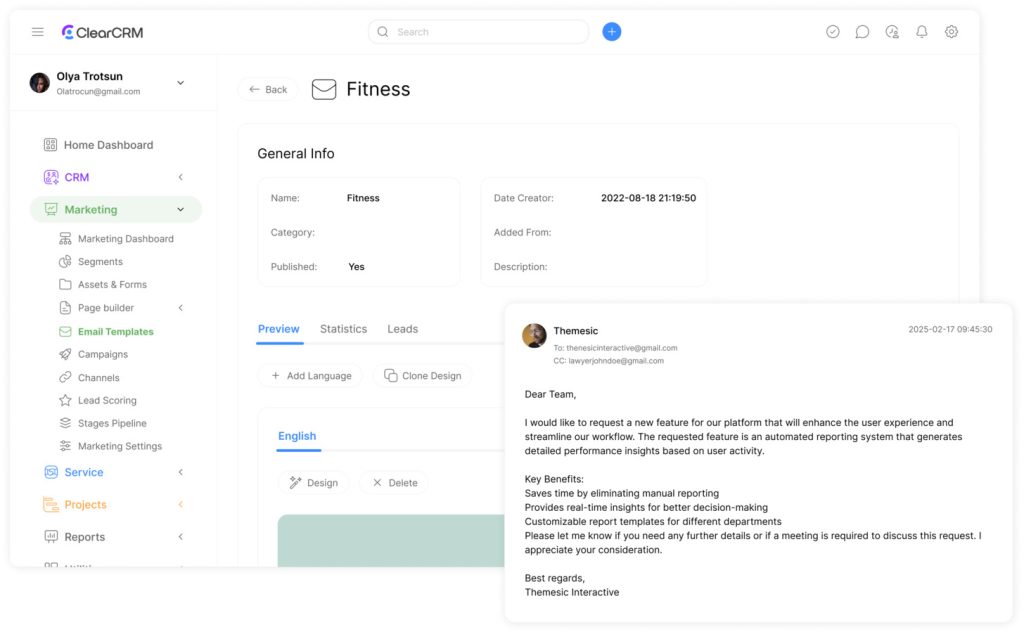Mastering Email Click Tracking: A Step-by-Step Guide

Modern businesses thrive on data-driven decisions, and understanding recipient engagement is no exception. Sophisticated email tracking tools now transform vague assumptions into actionable insights, revealing exactly how recipients interact with digital messages. These systems capture precise details like which links are clicked, when, how often, and by whom.
Leading platforms differentiate between automated email marketing campaigns and personalized link emails. Marketing tools often include click tracking by default, while advanced tracking email features for sales teams typically require premium access. Robust systems automatically filter suspicious clicks, ensuring metrics reflect real engagement.
The technology operates through discreet embedded tracking, including UTM-tagged tracked links and redirect servers. This seamless setup allows teams to focus on interpreting tracking data instead of technical implementation. When executed effectively, email click tracking becomes the foundation for performance optimization and engagement growth.
Key Takeaways
- Advanced analytics convert engagement patterns into measurable business intelligence
- Platforms separate marketing automation features from personalized outreach tools
- Automatic filtering maintains data integrity by removing non-human interactions
- Embedded tracking requires no complex setup for immediate implementation
- Detailed metrics empower strategic refinements to boost campaign effectiveness
Introduction to Email Click Tracking

Effective email marketing strategies now depend on real-time tracking of link engagement. By analyzing which links recipients click, businesses can refine communication efforts and boost conversions.
What Is Click Tracking?
This method uses specialized tags—like Urchin Tracking Modules (UTMs)—embedded in hyperlinks. When someone interacts with a link, these identifiers route through a tracking server. The system captures details such as:
| Parameter Tracked | Purpose | Business Impact |
|---|---|---|
| Timestamp | Identifies peak engagement periods | Optimizes send times |
| IP Address | Locates geographic interest zones | Guides regional campaigns |
| Link Specifics | Reveals popular content | Shapes future messaging |
Pro Tip: Advanced systems filter automated bot activity, ensuring metrics reflect genuine human engagement.
The Importance of Tracking Email Engagement
Monitoring interactions helps businesses identify high-value prospects. For example, recipients who open multiple links often signal stronger purchase intent. As one marketing strategist noted:
“Granular engagement data transforms generic campaigns into personalized journeys. It’s the difference between shouting into a void and starting meaningful conversations.”
Key benefits include:
- Pinpointing content that drives conversions
- Detecting patterns in audience behavior
- Prioritizing follow-ups based on interest levels
Understanding the Fundamentals of Email Click Tracking
Digital outreach strategies hinge on understanding user interactions at every touchpoint. Two primary methods dominate engagement analysis: automated campaign monitoring and personalized message tracking. Each serves distinct purposes and requires specific configurations to deliver actionable data.
Marketing Campaigns vs. Individual Outreach
Most platforms automatically monitor mass campaigns, capturing metrics like link engagement and geographic response patterns. Personalized outreach tools, however, often demand manual activation. Premium solutions provide real-time alerts when recipients view messages or interact with hyperlinks, offering sales teams immediate signals for follow-up.
Open Monitoring vs. Link Interaction Analysis
These methods differ fundamentally in execution and intent. Open detection relies on hidden pixel technology to confirm message views. Link analysis modifies URLs to redirect through tracking servers, recording precise interaction times and locations. While opens suggest initial curiosity, link engagements reveal stronger intent to explore content further.
| Feature | Open Monitoring | Link Analysis |
|---|---|---|
| Technology | Invisible pixels | URL redirection |
| Data Captured | View timestamps | Specific links accessed |
| Format Support | HTML & plain text | HTML only |
Activation Protocols and Limitations
Many systems disable link analysis by default to prioritize privacy. Users must manually enable it per campaign, ensuring compliance with regional regulations. Technical constraints apply: only web addresses starting with HTTP/HTTPS protocols work, excluding phone links or document anchors.
- Premium access unlocks advanced features like clickpath mapping
- Plain-text messages can’t support interaction tracking
- Automatic filters exclude non-human activity from reports
Mastering these operational principles allows teams to configure systems for maximum insight while respecting recipient preferences. Proper setup transforms raw numbers into strategic roadmaps for audience engagement.
Setting Up and Configuring Email Click Tracking

Implementing interaction analytics requires strategic planning and platform-specific adjustments. Proper configuration ensures systems capture meaningful data without disrupting workflows or recipient experiences.
Step-by-Step Guide to Enable Engagement Monitoring
Begin by accessing campaign creation tools within your marketing dashboard. Locate the analytics settings menu and activate link monitoring features before finalizing message content. This ensures all hyperlinks receive unique identifiers and redirect through secure tracking servers.
After launching campaigns, review performance metrics through dedicated reporting modules. Focus on metrics like regional response rates and preferred content types. Advanced platforms automatically filter irrelevant data, presenting only actionable insights for strategy refinement.
Integrating with Communication Platforms and Extensions
Most modern systems offer browser extensions that streamline setup. A single installation often activates automatic link tagging across outgoing messages. Customizable preferences let teams:
- Set default monitoring rules for recurring campaigns
- Establish real-time alerts for high-priority interactions
- Maintain consistent deliverability across devices
Platform-specific configurations determine whether analytics apply universally or require manual activation per campaign. Always conduct test runs to verify data accuracy before full deployment. This proactive approach prevents gaps in reporting and maintains audience trust through seamless functionality.
Effective Strategies Using “Email Click Tracking”
Maximizing campaign success requires strategic application of engagement analytics. Organizations transform raw interaction data into refined outreach plans by focusing on three core areas: link performance evaluation, conversion optimization, and technical problem-solving.
Decoding Interaction Patterns
Analyzing which hyperlinks recipients prefer reveals content effectiveness. High-performing tracked links often correlate with specific offers or resource types. Teams use this intelligence to:
- Prioritize popular content in future campaigns
- Identify inactive audience segments needing re-engagement
- Customize follow-ups based on demonstrated interests
Boosting Conversion Potential
Optimized campaigns balance link quantity with quality. Industry benchmarks suggest limiting each message to 2-3 primary calls-to-action. Additional tactics include:
- Testing landing page alignment with initial promises
- Implementing geo-specific offers for regional responders
- Scheduling resends to non-engagers with adjusted content
“The most effective campaigns treat each interaction as part of an ongoing conversation, not isolated events.”
Resolving Technical Challenges
Common setup errors stem from incompatible URL formats or testing oversights. When analytics misfire, professionals first verify:
| Issue Type | Diagnostic Step | Resolution Path |
|---|---|---|
| Non-responsive links | Check HTTP/HTTPS prefixes | Update URL structures |
| Missing data | Confirm tracking activation | Reconfigure platform settings |
| Inconsistent reports | Review email client compatibility | Adjust content formatting |
Regular system audits maintain data accuracy while respecting privacy standards. This proactive approach ensures analytics drive decisions rather than distract from core objectives.
Conclusion

Modern outreach strategies achieve measurable success through precise engagement analytics. By monitoring interactions with links in emails, organizations replace assumptions with evidence-based decisions. This approach reveals which content resonates, when audiences engage, and how to refine follow-up sequences.
Advanced systems deliver real-time notifications when recipients interact with key materials. These alerts enable swift responses to high-intent signals, turning passive readers into active participants. Tools that automate UTM generation simplify implementation while maintaining familiar workflows.
The strategic value lies in transforming raw data into personalized communication plans. Businesses identify top-performing regions, optimize send times, and allocate resources effectively. Over time, patterns emerge that guide content creation and audience segmentation.
Organizations adopting these practices gain clearer visibility into campaign performance. They build stronger relationships through timely, relevant messaging while respecting privacy standards. When executed well, link analysis becomes the foundation for sustained growth and customer loyalty.

